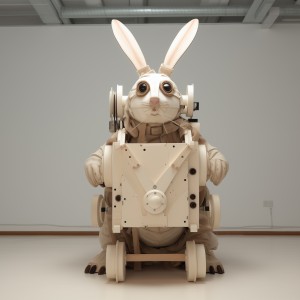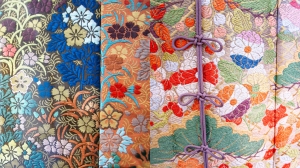Die Trennung von Natur und Kultur ist obsolet. Natur sind wir und alles, was uns umgibt. Natur macht und wird, Natur ist Subjekt und Material zugleich. Die Ausstellung nature after nature zeigt künstlerische Positionen, die mit Materialien arbeiten, die uns umgeben und Natur konstituieren. Unterscheidungen zwischen synthetisch und organisch, mensch- und naturgemacht werden nicht hingenommen. Eine Natur nach der Natur, die sich von einem idealisierten und ideologisierten Begriff abgrenzt und neu gedacht werden muss.
Fiberglas, Kunstharz, Sand und Straßenmüll bilden durchnässte Teerinseln (Marlie Mul). Transparente, mit Wasser, Stahl und Latex gefüllte Kissen aus nachgiebiger Plastikplane setzen Prozesse zwischen den Materialien in Gang (Olga Balema). Der digitale Scan der Haut einer Kupferkopfschlange wird mittels Licht auf kupferbeschichteten Kunststoff gedruckt. Seziert wird eine sprachlich wie bildlich transformierte Natur (Sam Lewitt). Teppiche, Dibond-Platten, Blech und Gummi formieren sich zu einer Agrarlandschaft (Nora Schultz).
Die Künstler der Ausstellung nature after nature setzen sich mit einer Natur auseinander, die von sozialen wie ökonomischen Strukturen durchzogen ist. Einer Natur, die sich aus Materialien wie Epoxiden, Aluminium oder Beton zusammensetzt; die Grundbestandteil von Technologien ist, und sich in chemischen wie physikalischen Prozessen zeigt. Mit einer Natur, die jenseits ihrer sinnlichen Erscheinungsformen wirksam ist. Einer Natur, deren vielschichtige Wechselwirkungen Vorstellungen von Raum und Zeit sprengen.
Die Ausstellung nature after nature veranschaulicht eine Natur nach der Natur, die sich in ihren komplexen, globalen Transformationen allein in Ausschnitten erfassen und begreifen lässt.
Künstler: Olga Balema, Juliette Bonneviot, Björn Braun, Nina Canell, Alice Channer, Ajay Kurian, Sam Lewitt, Jason Loebs, Marlie Mul, Magali Reus, Nora Schultz, Susanne M. Winterling
Kuratiert von Susanne Pfeffer
ENGLISH
The division of nature and culture is obsolete. Nature is us and everything that surrounds us. Nature does and becomes; nature is subject and material at the same time. The exhibition nature after nature presents artistic works using materials that surround us and constitute nature. Differentiations between synthetic and organic, man-made and natural are rejected. A nature after nature, which disassociates itself from an idealized and ideologized term and must be considered anew.
Fibreglass, resin, sand and litter form puddles of tar (Marlie Mul). Transparent cushions made of flexible plastic sheeting and filled with water, steel and latex trigger processes between the materials (Olga Balema). The digital scan of the skin of a copperhead snake is printed with light onto copper-clad plastic. A linguistically and pictorially transformed nature is being dissected (Sam Lewitt). Carpet, Dibond panels, sheet metal and rubber form an agricultural landscape (Nora Schultz).
The artists in the nature after nature exhibition concern themselves with a nature that firmly bears the mark of social and economic structures. A nature composed of materials like epoxies, aluminium or concrete; a nature which is the fundamental component of technologies and is revealed in chemical as well as physical processes. A nature that impacts beyond its sensory manifestations and whose varied interactions undermine our notions of time and space.
The exhibition demonstrates a nature after nature that, in its complex, global transformations, can only be grasped and comprehended in fragments.
Curated by Susanne Pfeffer
_________________________
Fridericianum Turm
Maha Maamoun. The Night of Counting the Years
11.05.14 – 27.07.14
Die erste institutionelle Einzelausstellung von Maha Maamoun konzentriert sich auf ihre Filme, mit denen die Künstlerin bestehendem Bild-, Text- und Tonmaterial Geschichte injiziert: In Domestic Tourism II (2008) werden Cameo-Auftritte der Pyramiden von Gizeh im ägyptischen Kino seit den 1950er Jahren aneinandergereiht. Dabei avanciert das antike Weltwunder in seiner Funktion als Kulisse, vor der nationale, individuelle und sexuelle Identitätsfragen im ägyptischen Mainstreamkino verhandelt werden, zum Protagonisten eines dramatischen Spielfilms. Wenn in 2026 (2010) der Text eines zeitgenössischen Science-Fiction-Romans auf das Reenactment eines ikonischen Filmbildes aus den 1960er Jahren trifft, wird die Vorstellung von Imagination als Möglichkeitsraum ad absurdum geführt. Auf Youtube gefundene, verwackelte Handyaufzeichnungen von der Erstürmung der Staatssicherheitsgebäude in Damanhur und Kairo im Frühjahr 2011 installiert Maamoun in Night Visitor (2011) zu einem beschwerlichen Parcours der Vergangenheitsbewältigung. Auch in ihrem jüngsten Film Shooting Stars Remind Me of Eavesdroppers (2013) werden keine Schauspieler und Szenerien dirigiert, sondern Bild- und Tonaufnahmen aus dem al-Azahr-Park mit einem intimen Gespräch über Belauschen, Wahrheit und Vertrauen orchestriert.
Mit ihren Filmen durchforstet Maamoun das kulturelle Imaginäre nach historiografischen Klammern für die Gegenwart. Dies schlägt sich auch im Ausstellungstitel nieder, der dem kanonischen Film von Shadi Abdel Salam entliehen ist. Ihre Arbeiten zeigen, dass die Frage, ob Kunst den symbolischen Zirkel verlassen kann, um in der Lebenswelt wirksam zu werden, falsch gestellt ist: Es geht allein um das Wie. Denn die Kunst öffnet sich wie von selbst, wenn Maamoun symbolische Repräsentationen ernst nimmt und sie miteinander kollidieren lässt. Die beim Zusammenstoß entstehenden Risse in den Darstellungen ermöglichen es, die schmerzenden Punkte aktueller Auseinandersetzungen zu erahnen.
Kuratiert von Nina Tabassomi
ENGLISH
Maha Maamoun’s first institutional solo exhibition focuses on her films, with which she injects history into existing images, texts and sounds: Domestic Tourism II (2008) compiles cameo appearances by the Pyramids of Giza in Egyptian cinema since the 1950s. This ancient Wonder of the World in its role as a backdrop for discussions of national, individual and gender identity in Egyptian mainstream cinema advances to become the protagonist of a dramatic feature film. When the text of a contemporary science fiction novel meets the reenactment of an iconic film image from the 1960s, the idea of imagination as potentiality is reduced to absurdity in 2026 (2010). Digging through blurred mobile phone footage on youtube which has captured the storming of the state security buildings in Cairo and Damanhur in spring 2011, Maamoun sets up an arduous course of coping with the past (Night Visitor, 2001). In her latest film Shooting Stars Remind Me of Eavesdroppers (2013), Maamoun likewise refuses to direct actors or scenes and instead orchestrates images and sounds recorded in Al-Azahr Park together with an intimate conversation about eavesdropping, truth and trust.
With her films, Maamoun trawls through the cultural imaginary in search of historiographical framing in which to set the present. This is also reflected in the exhibition title, which stems from the cinema classic by Shadi Abdel Salam. Maamoun’s works indicate that the question of whether art can step out of the symbolic circle in order to have an effect in the lifeworld is posed incorrectly: it’s all about the “how”. Art is opening out almost of its own accord when Maamoun takes seriously symbolic representations and has them clash with one another. In this process ruptures are caused in the representations, enabling the painful points of current questions to be intuited.
Curated by Nina Tabassomi
Fridericianum
Friedrichsplatz 18
34117 Kassel
fridericianum.org




